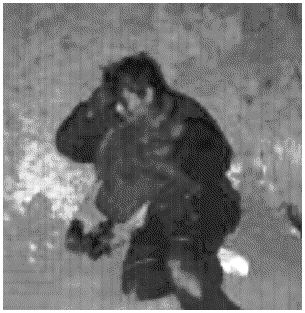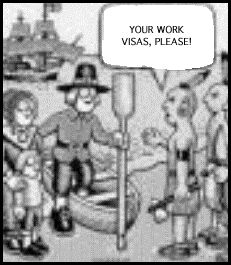Life and Death on
The U.S. - Mexico Border
Ken Ellingwood
(Pantheon)

Here they die, not like flies, but like beasts of burden: freezing to death in the mountains at night, in the snow and the cold; sometimes drowning in the deep irrigation canals of Southeaster California. Or, literally, cooked to death in the summer Sonoran desert, temperatures raging above 120°.
What do these soldiers of poverty look like after they have succumbed? According to Hard Line,
- Their skin had been burned to a furious, stop-sign red by the sun. The extreme loss of body moisture had peeled back their lips, giving them a sickly grin, and left darkened pits where they eyes should have been. All Dave Phagan [an INS agent] could think of was documentary films about the survivors of the Holocaust. These men had the same sunken look, "like skin draped over a skeleton."
 The warriors are not armed with guns or bayonets. They are usually armed with black clothes (to prevent being seen at night), a package of tortillas, and a gallon or two of water ... which is never enough.
The warriors are not armed with guns or bayonets. They are usually armed with black clothes (to prevent being seen at night), a package of tortillas, and a gallon or two of water ... which is never enough.
The American soldiers, are slowly, and ironically, being turned into the saviors. As Claudia Smith of the Rural Legal Assistance Foundation stated, "The terrible irony that underlies this is first putting migrants in mortal danger and then asking for credit when you rescue them." Thus INS agents, in their Ford Broncos, tracking across the wasteland, end up as uneasy angels, saving lives of those they are supposed to be pursuing.
One chapter of Hard Line tells of the Yuma disaster, where, in the early summer of 2001, thirty Mexicans died of heat prostration. The unveiling of the disaster brought pious protestations from those who had created this war; the bodies of the Mexicans --- mostly unidentified --- lie today in a Potter's Field just outside of Yuma.
Hard Line is not perfect. The author spends too much time with the American armed forces in their four-wheel drives and not enough time with the victims. He would have benefited by crossing over the mountains and deserts with the men, women and children --- suffering their agonies, sharing in their hardships. But by the very nature of this grisly war --- fomented by jingoistic congressmen to destroy the destitute and the needy --- is dramatic enough to carry the story line.